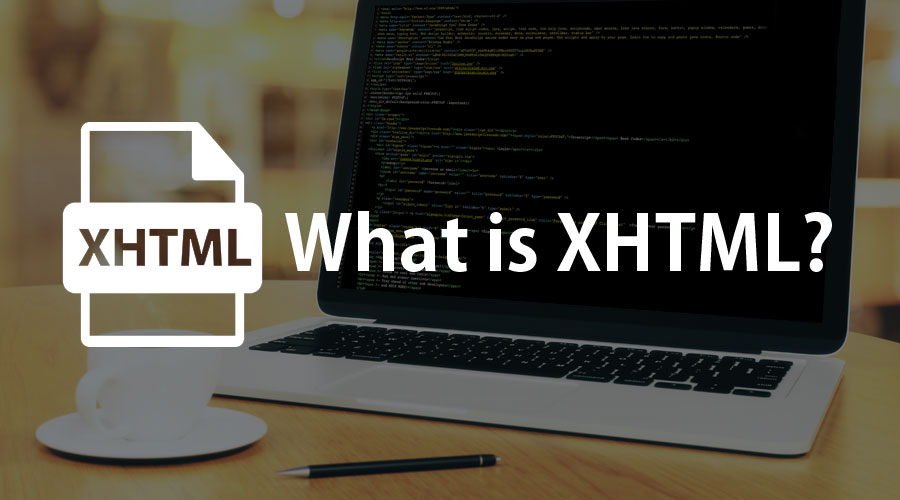Updated May 31, 2023

Introduction to XHTML
XHTML is a markup language written in XML; more of an XHTML is an application of XML. It is a hybrid technology between HTML and XML that combines both functionalities to become powerful and efficient. You must have heard of the term XHTML in web development. Many technologies are available today; each has its importance and use. Similarly, it has a unique role in front-end or web development. This article will try to understand XHTML from all significant aspects. We will try to understand XHTML by answering some interesting questions.
Extensible HyperText Markup Language is the name for which XHTML stands for. In a few words, it is a combination of HTML and XML. HTML serves as the medium for presenting data, whereas XML is utilized for data transportation. The World Wide Web Consortium (W3C), an international organization responsible for establishing standards for the World Wide Web (WWW), developed XHTML. It was designed to help web developers to make the transition from HTML to XML. It is designed explicitly for net device displays.
Understanding
Normal HTML works in most browsers, even if it has bad markup. Today, many browsers are available in the market, including smaller devices, mobiles, etc. They lack the power to interpret bad HTML. The solution to this was to mark up HTML correctly. XML makes restrictions to markup documents precisely and makes them well-formed, i.e., XML is more severe than HTML. That’s why HTML is combined with XML to develop XHTML with
strengths of both. Now the browsers can read and interpret markup with great accuracy. In addition, it enhances compatibility with other data formats.
How can you use XHTML?
It is the follow-on version of HTML, which means we can do everything HTML can do using XHTML. Mobile website development utilizes XHTML as it facilitates easy viewing of websites in mobile browsers. We can define and use our tags and elements in XHTML. We can convert an existing available HTML document into an XHTML document with a few changes.
Advantages and Disadvantages
The following points can be considered to make it easy when choosing to use XHTML.
Advantages
Below are the advantages:
1. Extensibility: As we can define and use our own tags, we can implement new ideas as web communication and presentation logic emerge. Let’s say there is a new program at receiving end, and we want to communicate with it; we can define our markup as per its needs and use it without any compatibility issues. New things can happen on the website as early as they emerge. Specific sets of extensions for XHTML are provided for mathematical
extensions, multimedia applications, and vector graphics.
2. Portability: As it follows the standards of XML, processing becomes easy for XML parsers. By utilizing it, we can simplify web pages, enabling small devices to handle them more effectively. This is important regarding mobile devices and small devices that contain small processors with less power. A portable advantage means we can develop a document per the specific requirement whenever needed.
3. Easy to Maintain: The error margin is less because the rules are clear in XHTML. The structure is more apparent, and the problem syntax is easier to spot; therefore, it is easy to author and maintain.
4. Ready for the future: The documents will be easily upgraded to the new version to take advantage of new features.
Disadvantages
There are no such direct disadvantages, but we will say there are a few limitations:
- It does not solve all cross-browser combability issues.
- It isn’t easy to begin as it is stricter, and sometimes you must think while developing new element names.
Required Skills
For learning, you should have some basic knowledge of HTML and XML. At least, it requires knowledge of their use and functionality. Any developer starting to learn XHTML might want to know the basics of web page development before proceeding, as it is the after version of HTML; it has the same structure as that of HTML.
Why Should We Use XHTML?
- It is compatible with all major browsers available in the market. We can write XHTML documents better to ensure smooth operation in existing browsers.
- It is more strict than HTML regarding syntax and case sensitivity, allowing developers to write code accurately.
- The documents are well-formed & consistent and can be parsed easily by current and future web browsers.
The design of the family accommodates the extensions provided by XML for developing new XHTML-based modules. These modules make combining new and old features easier while developing content.
Scope
Depending upon the specific requirement, those who want to choose between HTML and XHTML might want to consider one of both. As HTML is the basis of web page development, it becomes the basis, too, depending on the project-specific need. It can be extended by anyone who uses it. HTML5 is already available in the market as of now, so you should think before, especially if development is from scratch.
Why do We Need XHTML?
It is the improved version of HTML. It combines the power of both HTML and XML. Using these technologies separately provides a solution to the problem.
Who is the Right Audience for Learning XHTML?
Anyone enthusiastic about learning web development can learn XHTML. Web developers already using HTML4 may want to consider switching to XHTML.
How will this Technology Help you Grow in your Career?
As many modern technologies are available, including HTML 5, It will be helpful in specific cases. Learning will surely benefit Web developers, which will help them in their career growth.
Recommended Articles
We hope that this EDUCBA information on “What is XHTML?” was beneficial to you. You can view EDUCBA’s recommended articles for more information,

